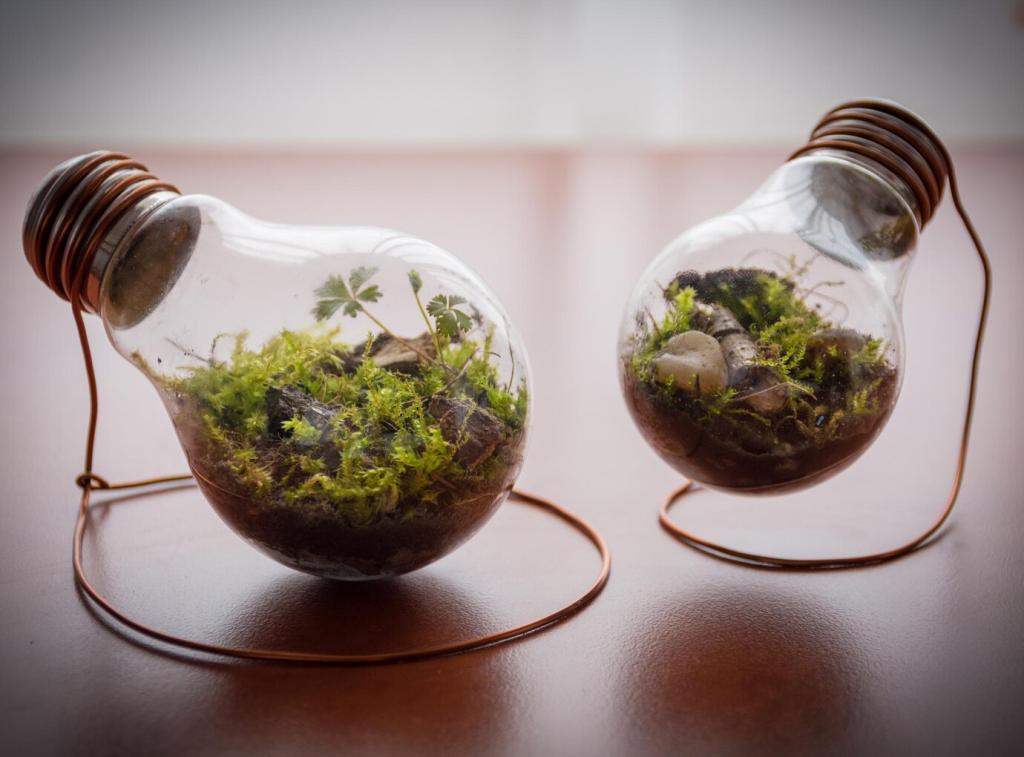
Eco-Friendly Flooring Innovations
Discover how modern advancements are shaping the world of sustainable flooring. Eco-friendly flooring options are transforming homes and commercial spaces by minimizing environmental impact while offering stylish, durable solutions. Learn how innovation is driving this shift, providing cleaner, greener alternatives that never compromise on beauty or performance. Explore the latest materials, manufacturing practices, and design trends redefining the way we think about what’s under our feet.

Previous slide
Next slide
Non-Toxic Manufacturing and Finishes
01
Water-based finishes have emerged as a leading choice for eco-friendly flooring because they emit significantly fewer VOCs than traditional oil-based products. This innovation contributes to better indoor air quality and helps create healthier spaces, particularly important for families with young children or people with sensitivities. Water-based finishes also offer a clear, durable coat that resists yellowing over time and enhances the natural beauty of the underlying material.
02
Traditional adhesives can off-gas formaldehyde and other toxic chemicals, but soy-based adhesives provide a safe, bio-based alternative. Developed from renewable soybeans, these adhesives minimize both occupational exposure for workers and long-term exposure in the home. The strength and versatility of soy-based adhesives also make them suitable for a wide variety of flooring installations, effectively balancing performance with eco-health standards.
03
Zero-VOC sealants represent a breakthrough for families concerned about air quality and environmental responsibility. These formulations are designed to deliver the same protective qualities as their conventional counterparts, without the release of hazardous chemicals into the air. Zero-VOC sealants are increasingly available for use on hardwoods, bamboo, cork, and even concrete, giving consumers more choices for truly eco-conscious finishes that safeguard both the planet and human health.
Upcycled plastic flooring solutions turn discarded bottles, containers, and other plastics into durable, attractive floor coverings. This process reduces the demand for virgin plastics while simultaneously addressing the challenge of plastic waste. The resulting products can closely mimic the look and feel of traditional flooring materials, such as wood or tile, with the added benefit of resisting water, stains, and scratches. Upcycled plastic floors are particularly appealing in high-traffic areas as a testament to both resilience and sustainable design.
Advanced Recycling Techniques
Previous
Next
The Role of Certification and Transparency
FSC certification establishes that wood flooring products originate from responsibly managed forests that prioritize social, environmental, and economic standards. Choosing FSC-certified flooring helps combat illegal logging, promote biodiversity, and support communities that depend on forest resources. The strict chain-of-custody procedures provide assurance throughout the supply chain, empowering consumers to make decisions in harmony with global forest conservation goals.
Enhancing Indoor Air Quality
Hypoallergenic flooring is essential for homes or buildings where air quality and allergen reduction are critical. Hard-surface options such as bamboo, cork, and linoleum naturally resist dust, pollen, and pet dander accumulation, helping to reduce common triggers for allergies and asthma. These materials not only prevent the buildup of irritating particles but are also typically easy to clean and maintain. By integrating hypoallergenic solutions, homeowners proactively support healthier living spaces for everyone, especially children and the elderly.

Previous slide
Next slide

Biophilic Design and Natural Aesthetics
Natural Texture and Color Palettes
Manufacturers are increasingly drawing inspiration from nature, offering flooring with textures and colors meant to evoke forests, meadows, and earth. These natural hues and grains create calming backdrops for living and working spaces, helping occupants feel more grounded. The tactile experience of natural or nature-inspired materials further heightens this connection, turning floors into a subtle yet constant reminder of the world outside.
Patterns Inspired by Nature
Innovative flooring now incorporates patterns that mimic the complexity of leaves, stones, or water ripples. These biomimetic designs not only captivate the eye but also foster a subconscious sense of well-being. By integrating natural motifs, designers create environments that support relaxation, creativity, and mood regulation, all while underscoring a commitment to sustainability through material and aesthetic choices.
Customization Through Modular Solutions
Eco-friendly modular flooring offers new opportunities for customization without compromising on sustainability. Tiles and planks made from responsibly sourced or recycled materials allow homeowners and designers to assemble distinctive patterns, experiment with color blocking, or adapt layouts to changing needs. This flexible approach supports design creativity and can even extend the floor’s life by allowing damaged sections to be easily replaced—reinforcing the principles of durability and eco-conscious design.
